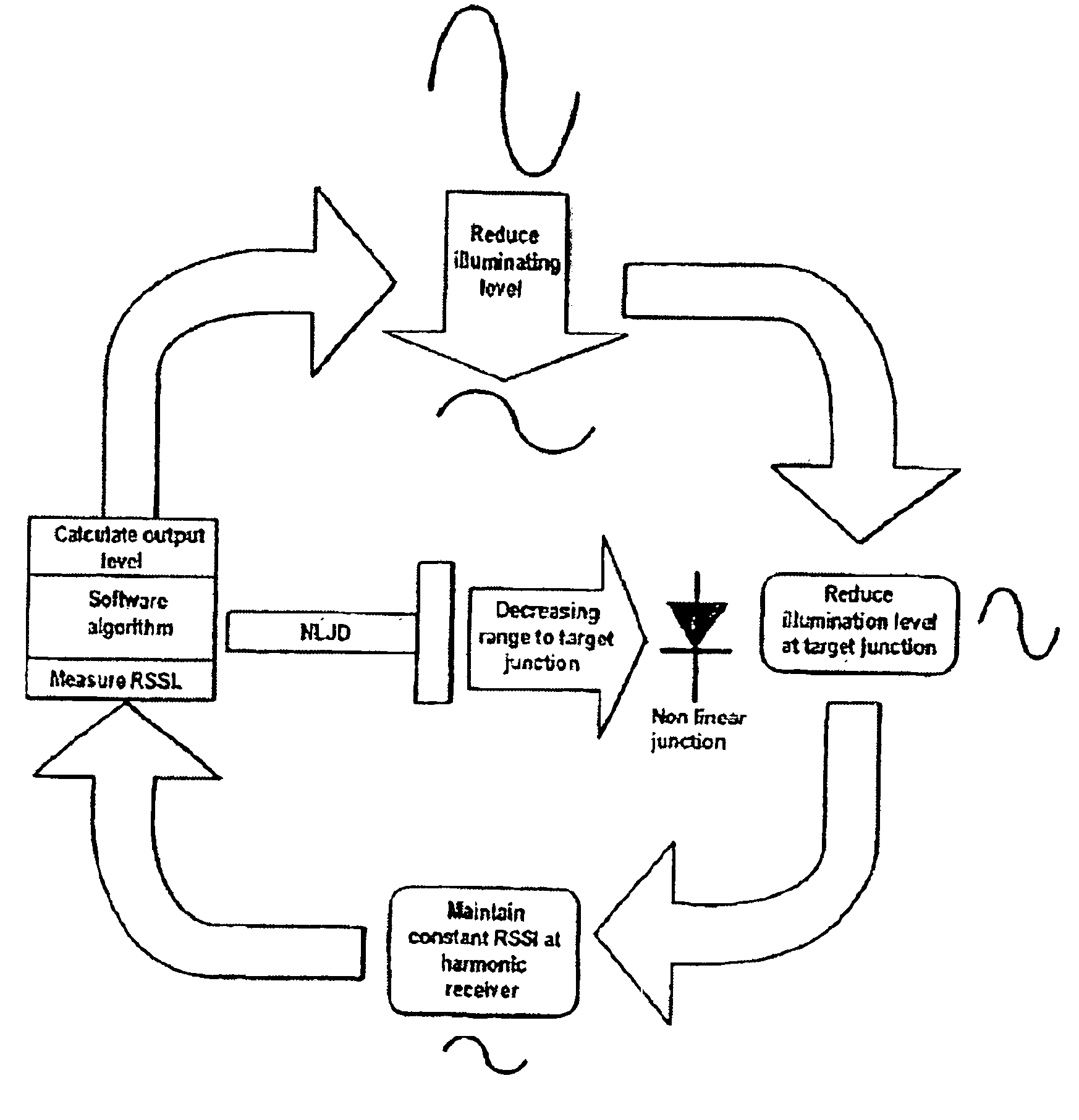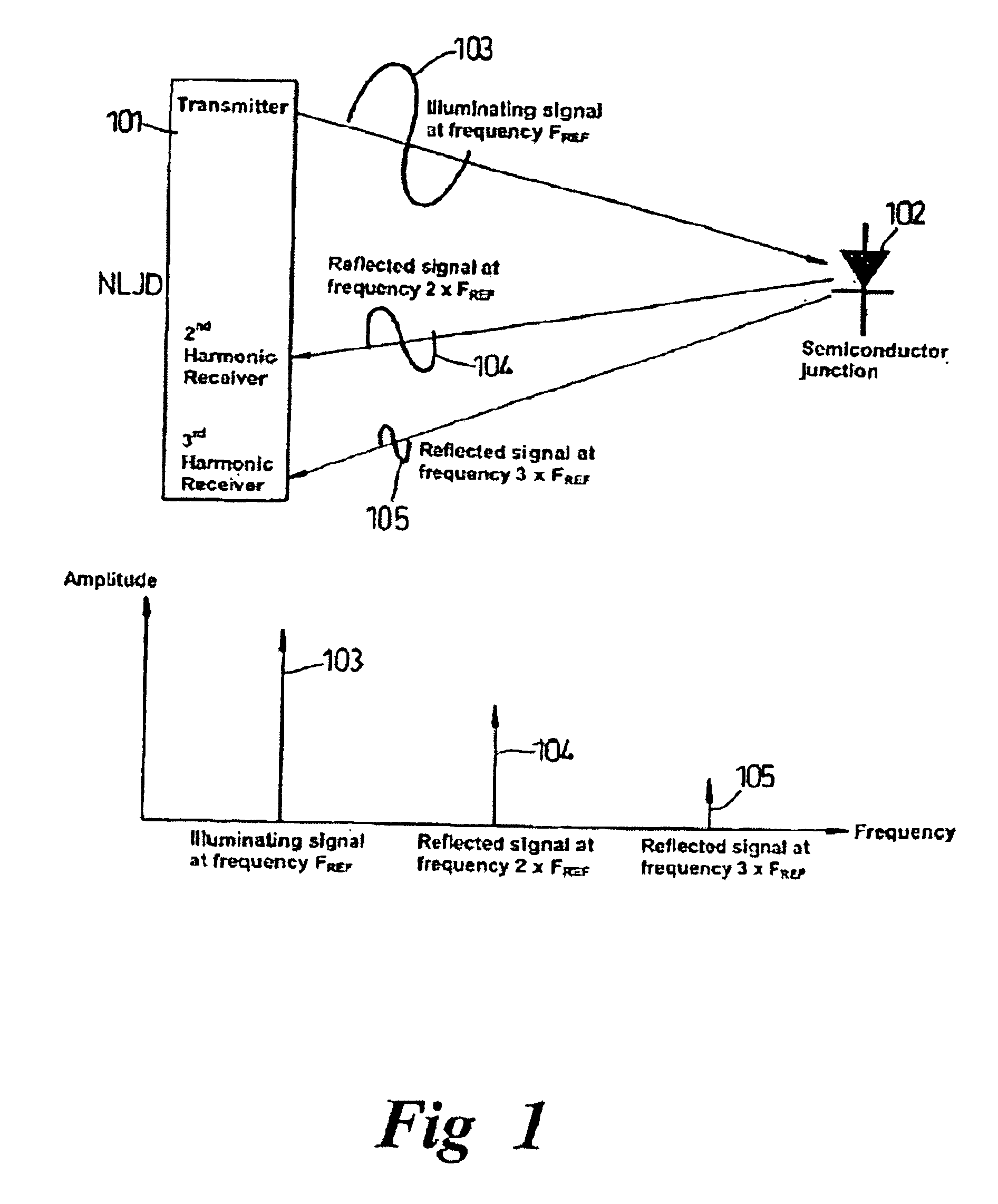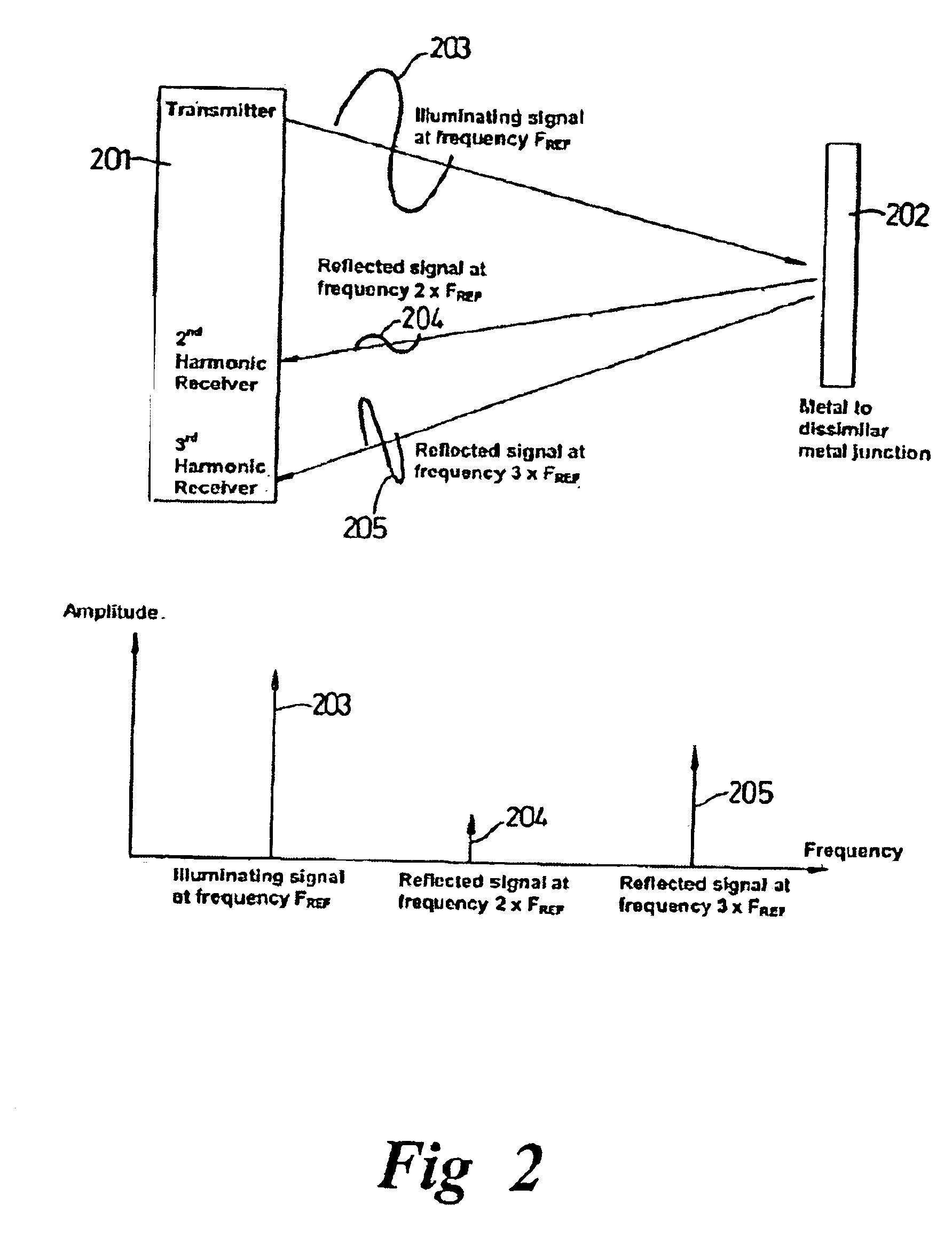Non-linear junction detector
a detector and nonlinear junction technology, applied in the direction of geological measurements, electric/magnetic detection for well-logging, using reradiation, etc., can solve the problems of unwanted device triggering, higher illumination levels, and increase the risk of interference for casual observers, so as to reduce or avoid the increase of the illumination level of the target junction
- Summary
- Abstract
- Description
- Claims
- Application Information
AI Technical Summary
Benefits of technology
Problems solved by technology
Method used
Image
Examples
case 1
[0091] NLJD Approaching a Target Junction
[0092]With reference to FIG. 6, the following description of the algorithm operation relates to the NLJD moving toward a target non-linear junction
[0093]At step 601, the system reads the current 2nd harmonic RSSI value and in step 602 determines a difference value, NEWPDIF between the current RSSI value and the maximum (target) allowed RSSI value. When the RSSI from the 2nd harmonic receiver rises above the MAX_INPUT_RSSI level (ie. NEWPDIF>0, step 603) the software algorithm will decrease the illuminating signal level, via the TXPOTN variable discussed later, to drive the RSSI back to the MAX_INPUT_RSSI level.
[0094]The amount of decrease in the illuminating signal level, NEWPDIF, is determined by checking to see whether the value NEWPDIF exceeds a maximum allowed step size or not (step 604). If yes, the algorithm calculates NEWPDIF to be OLDPDIF+MAXSTEP (step 605) and if no, OLDPDIF+NEWPDIF (step 606).
[0095]The illuminating signal level can ...
case 2
[0101] NLJD Receding from a Target Junction
[0102]With further reference to FIG. 6, the following description of the algorithm operation relates to the NLJD moving away from a target non-linear junction.
[0103]When the RSSI from the 2nd harmonic receiver drops below the MAX_INPUT_RSSI level (ie. the test NEWPDIF>0 is not true, step 603), the software algorithm will increase the illuminating signal level, via the TXPOTN variable discussed later, to drive the RSSI back to the MAX_INPUT_RSSI level.
[0104]NEWPDIF is converted to a positive value (step 620) and the amount of increase in the illuminating signal level, NEWPDIF, is determined by checking to see whether the value NEWPDIF exceeds a maximum allowed step size or not (step 621). If yes, the algorithm calculates NEWPDIF to be OLDPDIF−MAXSTEP (step 622) and if no, OLDPDIF−NEWPDIF (step 623). If the recalculated NEWPDIF proves to be a negative number (step 624), the value is set to zero (step 625) and no change in power level occurs. ...
PUM
 Login to View More
Login to View More Abstract
Description
Claims
Application Information
 Login to View More
Login to View More - R&D
- Intellectual Property
- Life Sciences
- Materials
- Tech Scout
- Unparalleled Data Quality
- Higher Quality Content
- 60% Fewer Hallucinations
Browse by: Latest US Patents, China's latest patents, Technical Efficacy Thesaurus, Application Domain, Technology Topic, Popular Technical Reports.
© 2025 PatSnap. All rights reserved.Legal|Privacy policy|Modern Slavery Act Transparency Statement|Sitemap|About US| Contact US: help@patsnap.com



